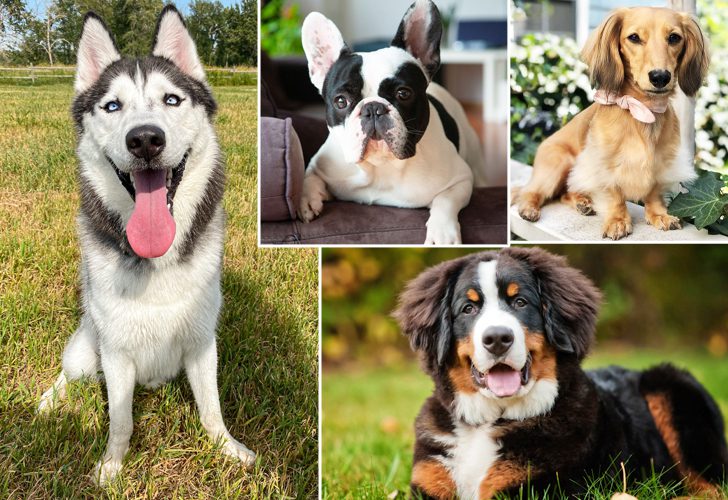
Pekingese

The Pekingese are known for their tenacity and were mainly raised by the ancient Chinese Imperial family as lapdog friends. Some served as royal pets, with domineering personalities and robust demeanors that commanded respect. It's tough to train a Pekingese because it feels it should be in command and approaches the task with belligerence.
If this dog is aggressively punished, it can bite. Strangers are considered invaders by well-socialized Pekingese, yet they are incredibly affectionate with their master and family. The breed makes an excellent watchdog. They are quite daring for their size and are considered a threat that will battle outsiders to death.
Afghan Hound
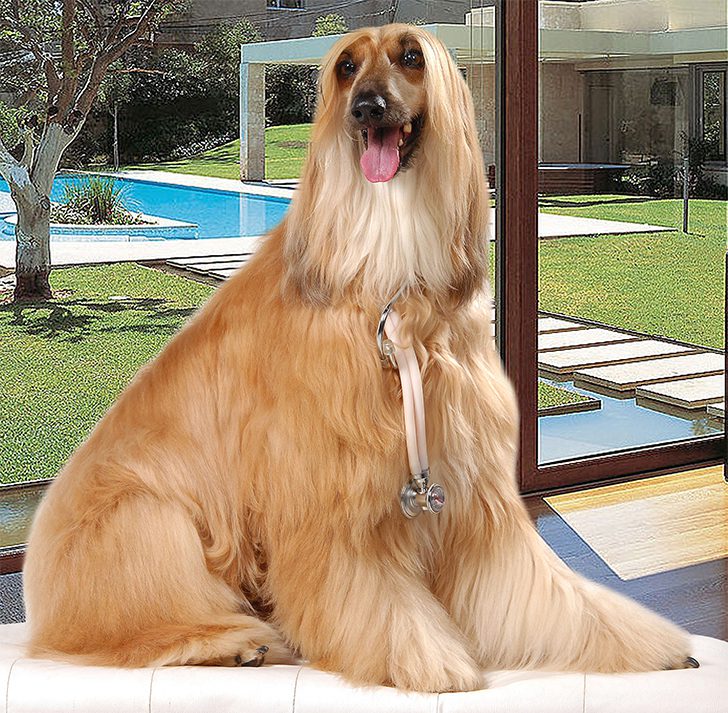
One dog breed known to command attention for its looks is the Afghan Hound. It has an elegant and aristocratic demeanor that defines its personality. The canine's appearance can be deceiving of its excellent hunting abilities. This dog breed is believed to have originated from the Middle Eastern mountains and Egypt, where it was trained to expertly chase after small prey and gazelle.
It requires a lot of outdoor activity to sustain its strong instincts and the ability to circumnavigate mountain terrain. Adopting it requires daily coat care and exercise to calm it down. Without attention, it can be the worst playmate.
Siberian Husky

The Chukchi people of Siberia kept the Siberian Husky to pull sleds nearly half a million years ago. By its looks, this high-energy canine isn't meant for the sofa or backyard due to its intelligence, which easily draws the breed to mischief. This avid digger is extremely destructive when left alone or bored.
According to PetVet, the Siberian Husky is one of the worst dog breeds to keep as a pet for first-time owners. Its strong predatory acumen makes it easy for it to escape confinement, so it can prey on other pets like cats or hamsters. They're independent-minded, good companions, playful, and happy.
Rhodesian Ridgeback
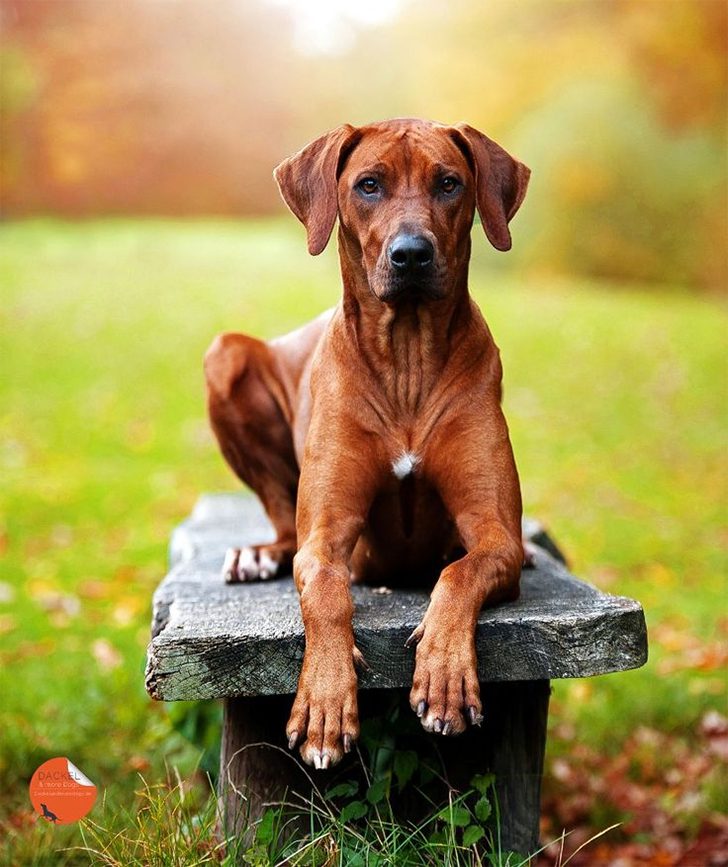
The Rhodesian Ridgeback is a sleek and powerful dog, identified by a streak of reverse-growing strands down its back. Although it's intelligent, affectionate, and child-friendly, this canine isn't a good fit for many people. It requires a lot of energy that many folks can't provide.
Going by its name, it was majorly reared in Rhodesia, where in the 1870s, it bravely protected its owners from lion attacks. If improperly handled with its strong-willed character, the Ridgeback becomes stubborn. It resorts to destruction if it lacks sufficient exercise or recognizable human authority. However, if properly brought up, it can be calm, obedient, and gentle.
Fila Brasileiro
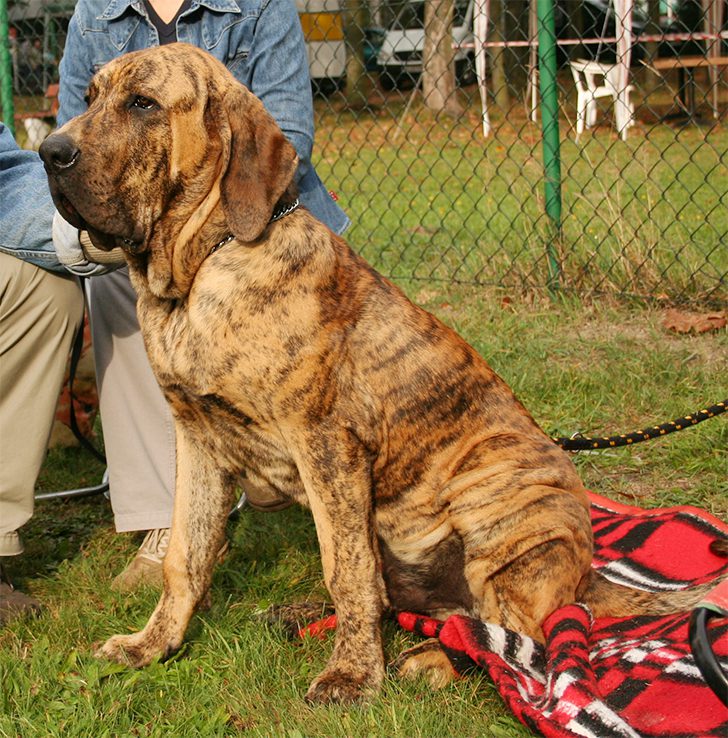
It's not heartwarming to know that the Fila Brasileiro is a canine listed on the Dangerous Dogs Act, banned in Norway, Australia, the UK, New Zealand, and other countries. The Fila Brasileiro isn't ideal for first-time pet owners since it requires a homeowner's insurance policy coverage. Keeping it can give rise to hefty legal liability.
This powerful mastiff drools and sheds profusely and gets tiffed easily by strangers or guests. It needs an alpha owner to dominate it since they're naturally-bred hunters with vigorous family protection acumen. Dog Breed Info says that Fila Brasileiro can be dangerous if it becomes alpha to humans and dominates its owner.
Border Collie
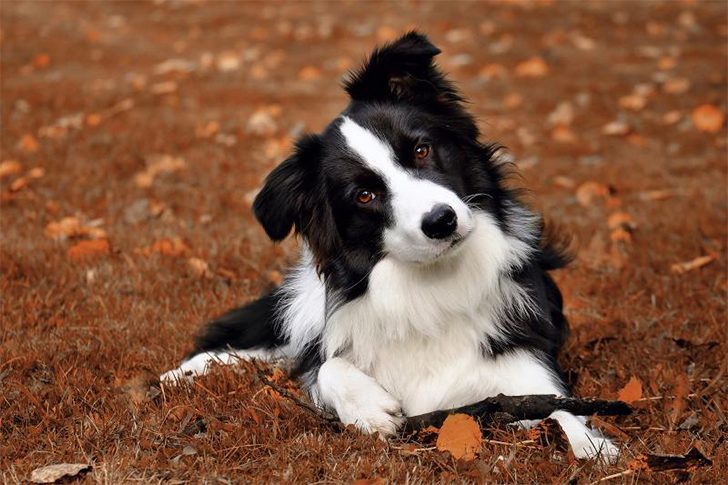
The Border Collie is a quintessential sheepdog admired for its disposition and herding ability. It's full of energy and excitement, traits that make it well-suited for the exhausting shepherding task. The Collie barks a lot and is territorial, akin to herding dogs. Reversely, it loves kids, needs a human touch, and is affectionate.
It's a crème de la crème watchdog that relentlessly follows its master around, leading to its development of a tight bond with its owner. Herding is in its blood, so it'll do that to nearly everything that moves around it; kids, cats, you name it! When bored, the Border Collie can be extremely destructive compared to other dogs.
Weimaraner

The large game hunter, the Weimaraner, was famously bred in Germany in the early 19th century. It's courageous, intelligent, and has excellent scenting power. Developed with speed, stamina, and hunting versatility, it can take down any large game or prey, especially bear and deer. Photographer William Wegman immortalized this breed's distinctive, silvery grey look.
The Weimaraner is very vocal when unhappy, as it's an extremely loyal dog that loves human contact. It's an outdoor canine that commonly suffers from anxiety in the event of a separation. VetStreet holds that they can injure themselves when left alone due to digging and attempting to escape.
Bull Terrier
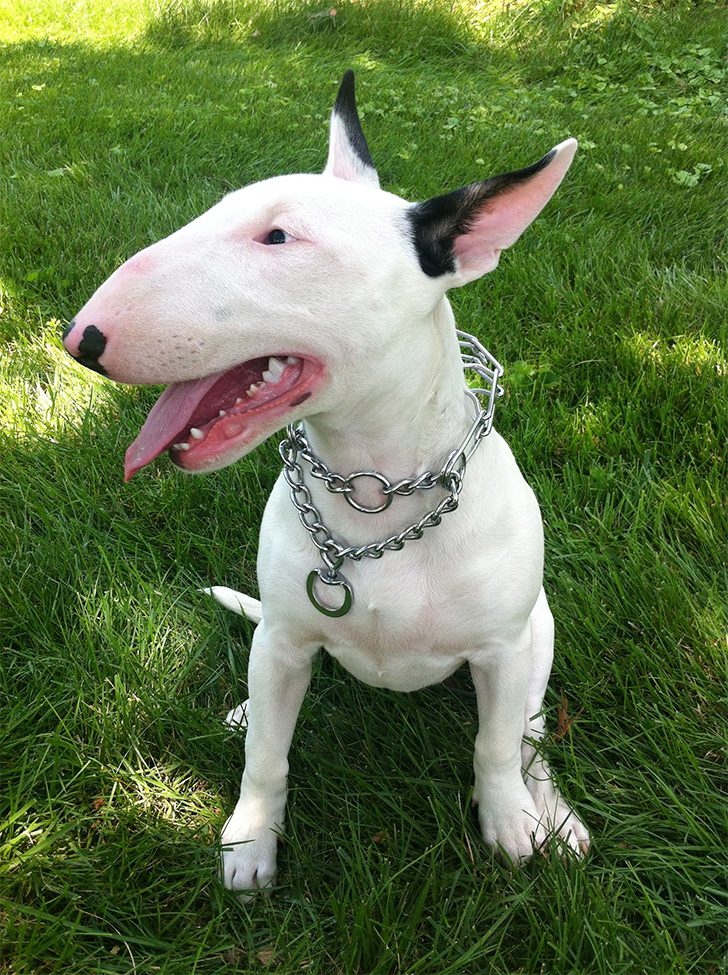
The Bull Terrier, fondly known as Spuds MacKenzie, a lively Budweiser ad dog, has always been popular as a advertising commercial dog. The dense-headed canine isn't a good pet for people new to dogs. Its breeding started in the 1900s, but it was recognized as a separate dog breed later in 1936.
Although a Bull Terrier is fearless, active, fun-loving, clownish, and obedient, it's not cut for all households. It can be dangerous and destructive to young children if left alone without mental stimulation or enough exercise. Keep them away from other pets like cats, rabbits, and guinea pigs, and keep them running and playing.
French Bulldog
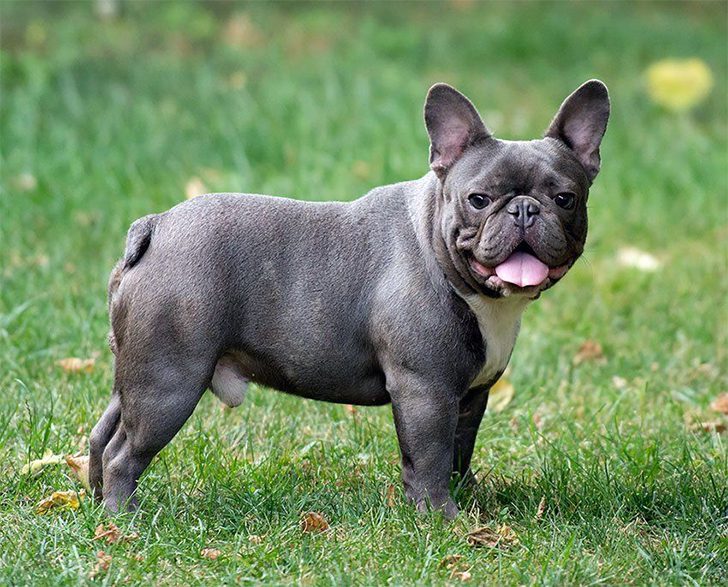
Take care not to mix up the French Bulldog with the common Bulldog. It doesn't require much exercise since it can't keep up with swimming, jogging, or high heat. They were built as lap dogs because they couldn't regulate their body temperature, needing a climate-controlled indoor area. It's a brachycephalic, "squished-faced" dog that sheds its strands.
Since it's brachycephalic and prone to many health issues and diseases, it's not recommended for first-time dog owners, who may not know its care. Training it can be difficult as it's aggressive as an alpha dog. Although the Frenchie is affectionate, seldom yappy, but quiet, it shouldn't be left alone for long.
Caucasian Ovcharka
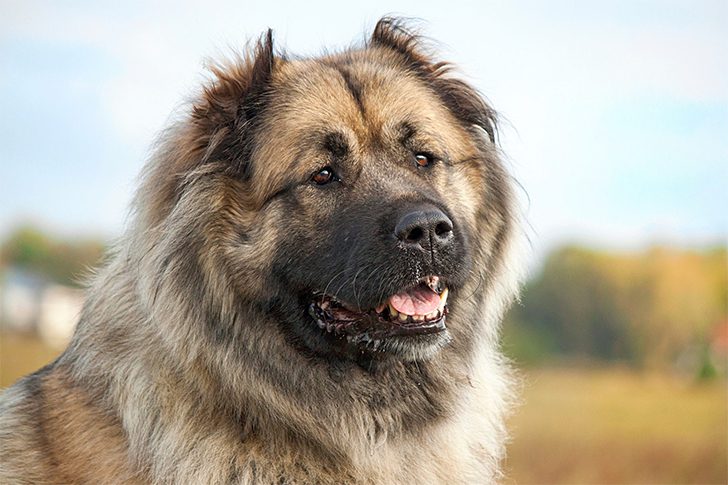
The astute sheep guard, the Caucasian Ovcharka, originated in Russia in the '20s. With a name meaning "sheepdog" in Russian, it dutifully herded and protected the flock from the wolves of the Eastern European Caucasus Mountains. It's an extremely aggressive and territorial breed with technical defense diligence and intelligence.
This low-energy but strong-willed and high-strung canine has a coat that needs a cool climate and intensive maintenance. They're aggressive if not socialized well. According to VetStreet, the dog's protective nature shouldn't be taken for meekness by novice dog owners. It's very smart but independent in thinking, so it needs proper, firm, loving, and patient guidance.
Catahoula Leopard Dog
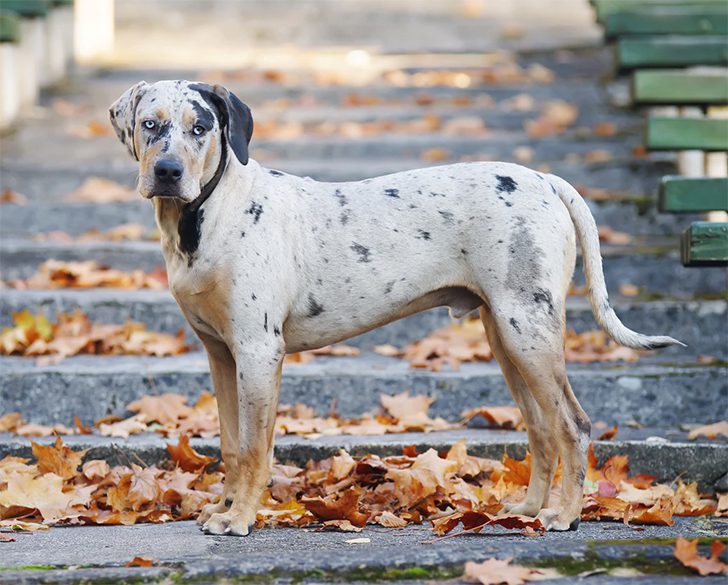
The Louisiana Catahoula Leopard Dog is one of the dog breeds with the longest names. It's well-known in northern Louisiana as a farm dog tasked with guiding hogs to slaughter. The name Catahoula came from Native American tribes that used it for hunting wild game, and it's the official Louisiana state dog.
Catahoula Leopards should always be on a leash and given firm leadership that involves a lot of exercise and walking. It's a loyal and affectionate companion that requires a large fenced space under the care of an alpha owner with a lot of activity. You must be its pack leader, or else disaster will prevail.
Perro de Presa Canario
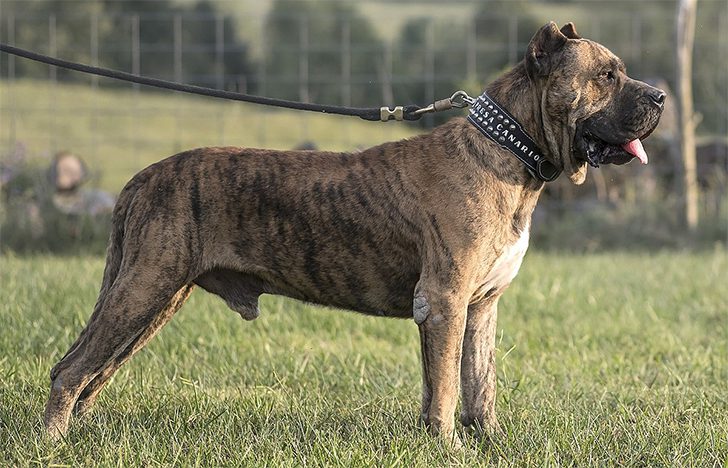
Although famous as Presa Canario, this Spanish dog's full name is actually Perro de Presa Canario. It originated in the Spanish autonomous community of the Canary Islands as a livestock canine. Owners employed it to herd hogs and cattle to run off and kill predatory dogs to protect the flock. It's a very powerful, territorial animal.
VetStreet strictly recommends Presa Canario to people conversant with training dogs since it reportedly killed a female owner in 2005 in San Francisco due to lack of control. Since it instinctively has a very strong predation and territorial drive, it needs professional training and sustained reward-based "work."
Skye Terrier
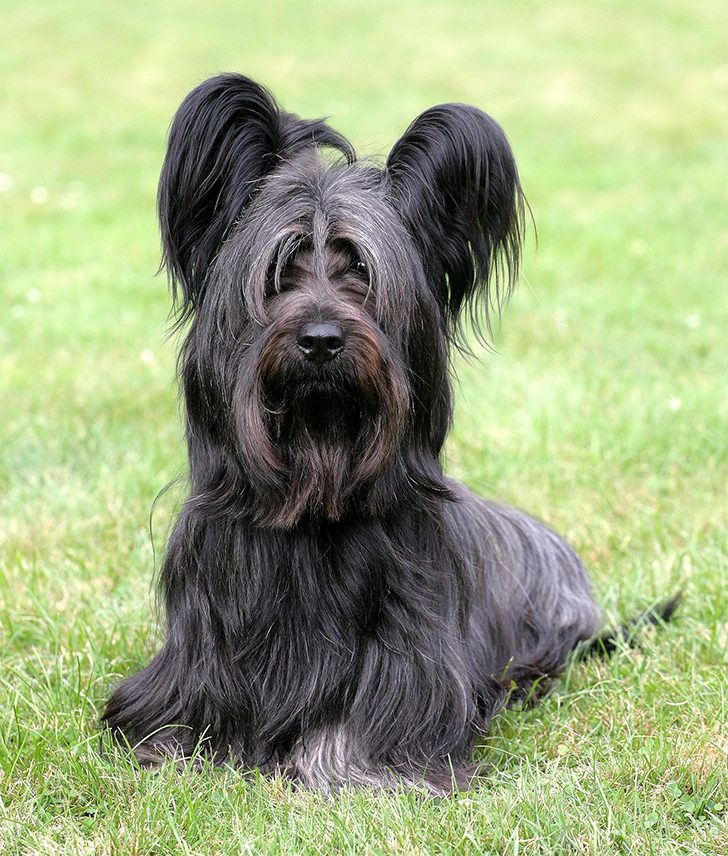
The Skye Terrier considered a heavenly breed with a lion's heart, is tenacious and tough and an avid digger and barker par excellence that requires extra attention. This relentless cat chaser is hard to train, doesn't get along with other canines, and is stubborn. Its flowing strands need constant grooming to avoid tangling.
This creature from Scotland's Isle of Skye can be extremely loyal, as one is reported to have slept on its dead owner's grave for 14 years till its death. The breed's moderate intelligence works for hunting badgers, foxes, and otters. It even appeared in the royal quarters during the aristocratic Victorian era.
Dachshund

The name Dachshund is German for the "badger dog" breed. Although it has short legs and a long body, it's an excellent badger hunter, especially at chasing them down the burrows. Its tenacity makes it brave and fierce. According to a 2008 academic animal science journal study, it's the most aggressive of all canine breeds.
Dachshunds come in three varieties that are inveterate diggers, a trait that suits their badger-chasing acumen. Also known as a wiener dog, it's adored by kids even though it's not a good pet for them. Being an aggressive breed, it can turn on children or become hostile to strangers.
Australian Shepherd
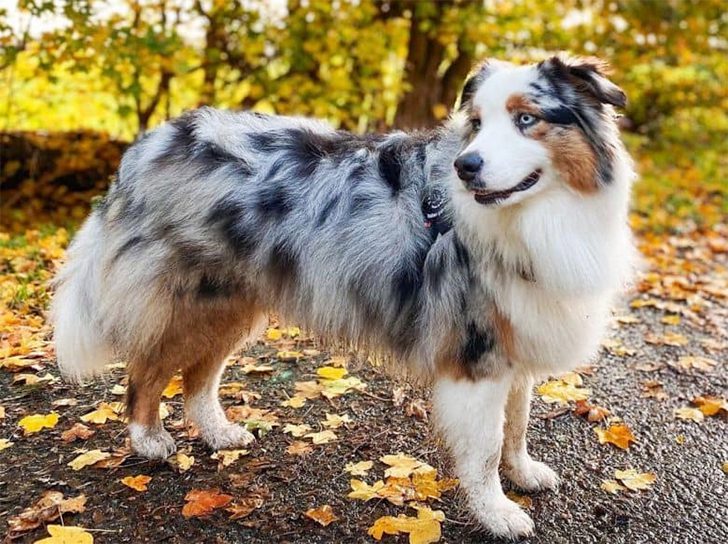
The name Australian Shepherd means this dog breed is an avid herder, although it originated in North America. This guide dog was famous in the Western States, particularly during the Gold Rush period. Being extremely active, it requires physical simulation around the clock to sustain its high stamina levels for all-day-long herding.
As a herding breed, the Australian Shepherd is bold, alert, responsive, confident, and smart. If you fail to release these traits through daily work routines, this dog breed will make your life challenging. In a family setting, it has a propensity to herd pets and children and may nip and use unfavorable hunting antics.
Doberman Pinscher
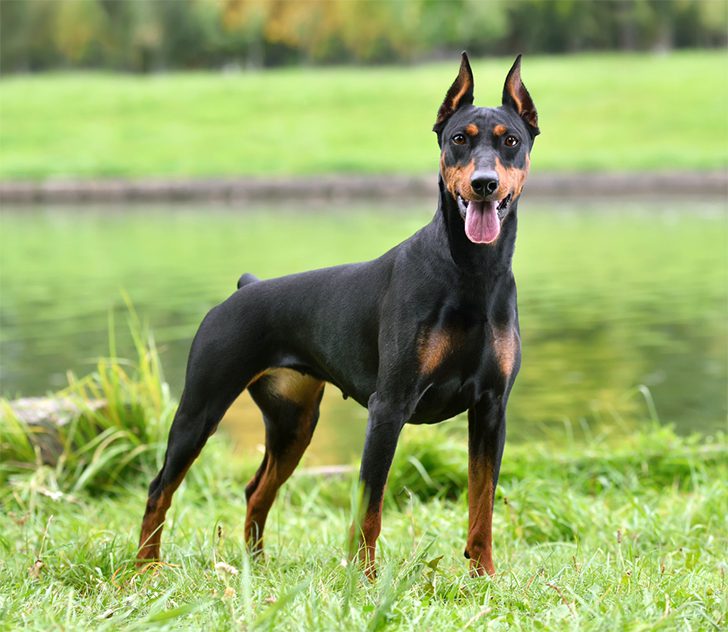
One of the most known and highly energetic dog breeds across the globe is the Doberman Pinscher. It's big and strong and makes an excellent guard dog. However, it's not for everyone as it requires extensive training and specialized handling by a dominant owner. If improperly attended to, it'll become bored, vociferous, and destructive.
A German tax collector who needed protection for his collected tax monies is credited with developing this powerful and dependable guard dog breed. Its first recognition came at a dog show in Erfurt in 1897. Dobermans are easy to train, but it requires consistency lest they become restless, willful, and stubborn.
Shar-Pei

The Shar-Pei has a wrinkled outer body, notably in pups, until the wrinkles progressively grow into folded flesh. Although the wrinkles are adorable, they are vulnerable to infection. In comparison to other dog breeds, Shar-Peis have a darker tongue. This dog, known to others as the Chinese Shar-Pei, is aggressive and territorial.
It, like all other kinds, can be groomed for correct socialization by a competent trainer while it's a pup. The dog's distant nature may make it a disheartening pet for children. They don't like hugs or cuddling, yet they have to live indoors. It's a cunning yet obstinate animal.
Belgian Malinois
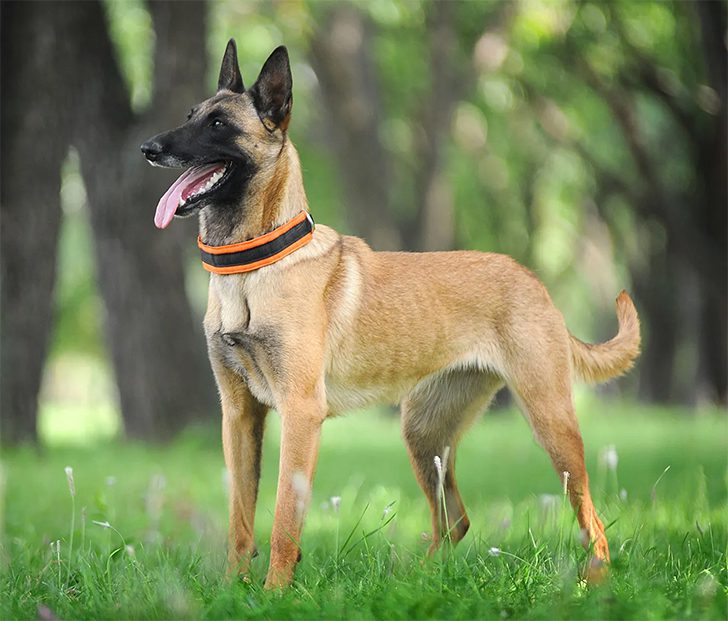
Since the Belgian Malinois was raised to be a herder, they nip or bite at kids to maintain order. In Belgium, this species became more famous as a shepherd or security dog in the late 1800s. They're still one of the most popular canines in the nation. This strain is bright and obedient, with intense territorial impulses.
A Malinois owner needs to be firm and fair. This breed will be exceedingly rebellious under a lax owner. Since these canines have high energy, they demand strenuous exercise regularly. If they aren't appropriately socialized and taught, they can become destructive and unmanageable.
Dogo Argentino

Another type of dog forbidden in the UK under the Dangerous Dogs Act of 1991 is the Dogo Argentino. It was bred in Argentina as a game hunter for large animals like pumas. It was also developed to guard humans. The Dogo was actually prohibited in various nations owing to its traits of stubbornness, intellect, and domination.
This dog breed isn't suitable for inexperienced dog owners. It's huge, powerful, and active, as well as clever and rebellious. It can become destructive and take command without a good leader who's also calm, tough, and persistent. They must be kept busy since they are natural workers.
Cane Corso

The Cane Corso is a big game hunting dog breed. They weigh about 120 pounds and are not suited for novice dog owners generally. Even those who succeeded with collaborative breeds like retrievers and spaniels will struggle against this strong, clever, energetic, and rebellious canine.
This dog breed will not tolerate outsiders, even after repeated socialization. It's a guard dog at its core. Professional dog handlers don't recommend taking this robust and hostile hound from Italy to playgrounds. If left alone at home, it can be disruptive and violent. It's extremely loyal to its family due to its protective guarding nature.
Boerboel
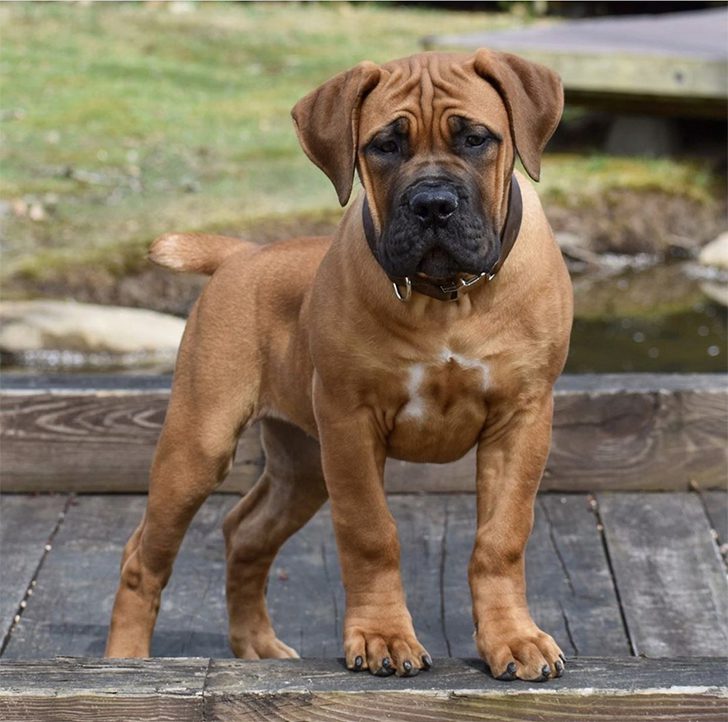
In the 1800s, the Boerboel, or "farmers' dog," was developed in South Africa as a guard dog. They were used to keep an eye on industrial mining areas in 1938. This strong breed can weigh up to 180 pounds. It's a clever and obstinate mastiff that shouldn't be adopted by novice dog owners.
Professional hound handlers may develop a well-socialized pet through constant training and socializing from a young age. Since they have thick fur, Boerboels prefer to stay outside in cooler temperatures. On the contrary, dog parks are not advisable for this family-protective dog that may strike out of the blue.
Rottweiler
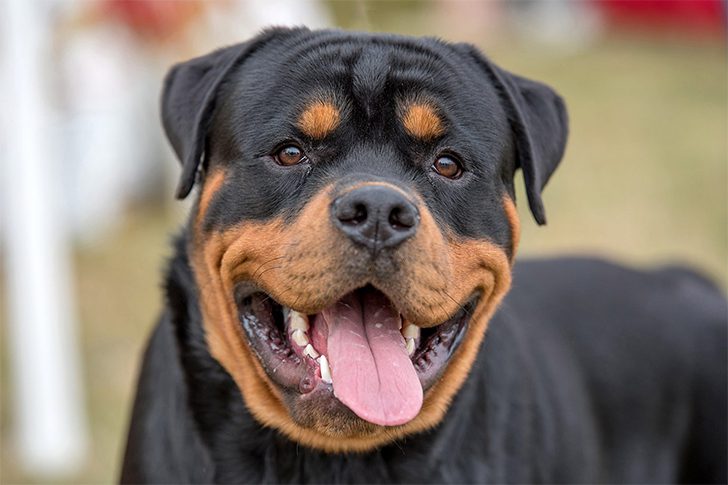
Over the years, Rottweilers have demonstrated their worth as police, livestock, army, and therapeutic dogs. This hound breed is very easy to train and very loyal. The Rottweiler's work ethic stretches back to ancient Romania, during which they were most probably employed as drover hounds. The dog is named after Rottweil, Germany, which supplied tiles for Roman shower rooftops.
In terms of bite casualties, Rottweilers are second only to pit bulls. They are enormous, strong, and extremely guarded. At 135 pounds, it's mostly muscular, and its natural impulse is to fight a danger or stranger. As a consequence, it's a formidable police dog.
Tosa
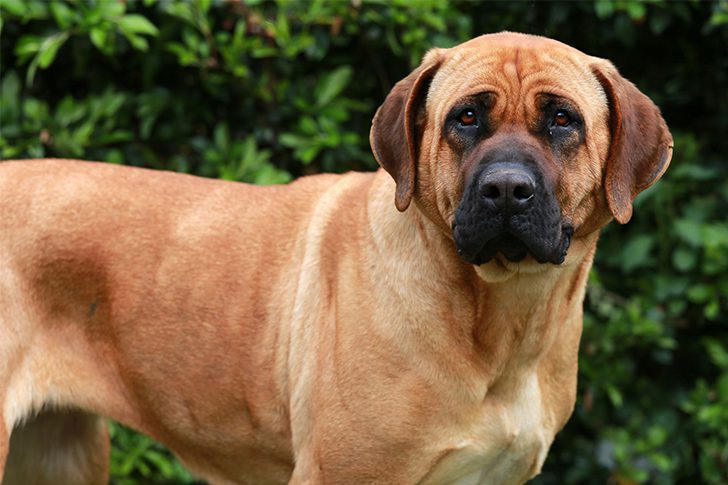
Tosas are dog breeds that may weigh up to 200 pounds, making them unsuitable for first-time dog owners. Four European nations, along with the United Kingdom, have banned the animal. A six-foot-high hurdle is required to reprimand and groom this strain. Electrical barriers are worthless to a Tosa; the jolt will not dissuade it.
Standing upright, this hound has the athletic aspect of a warrior. It has its roots in 14th-century Japanese dog combat. The mastiff is named after the Shikoku Island province of Tosa, and it's alert, dignified, peaceful, and brave. These canines make excellent protection dogs as well as friends.
Jack Russell Terrier
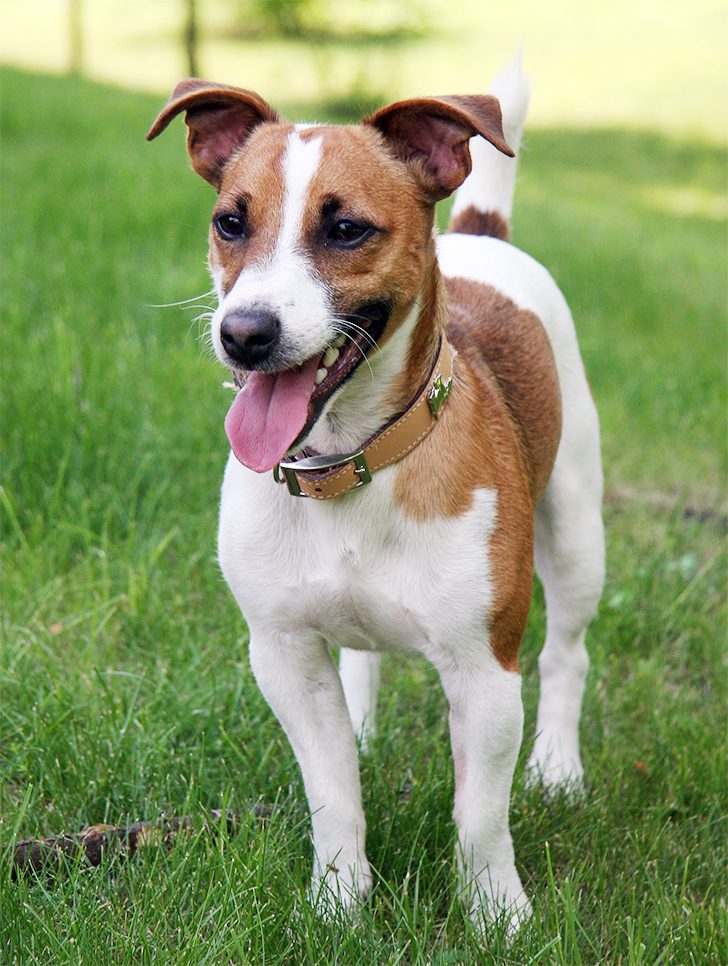
Smaller in size, the Jack Russell Terrier is a tough dog. It barks, leaps, and hunts with ferocity. Its purpose was to be a hunting dog. If the JRT is on the hunt, your yard or living room is fair game. Spiders, mice, and other insects will be exterminated, and you may sometimes find your yard all dug up.
They are susceptible to behavioral problems such as "Small Dog Syndrome." JRTs are tough to interact with and must be consistently and firmly trained by a skilled trainer. These canines require a tall fence and plenty of exercise. Climbing and leaping over barriers is one of its strong attributes.
Bernese Mountain Dog
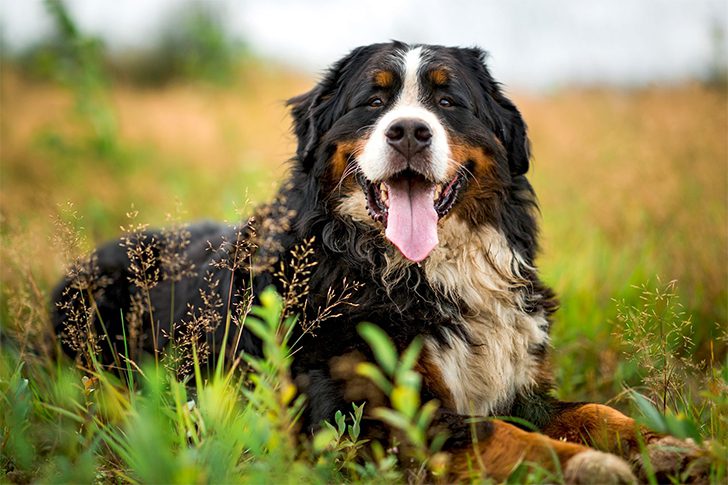
One of the most cheerful and clever hound breeds is the Bernese Mountain Dog, which likes to play with kids. It's one of the most famous canines in the Swiss Alps. Its thick, long, and silky coat keep him comfortable and warm while it's chilly outside. This highland dog might be deployed as a shepherd or flock guardian in the Alpine weather.
Bernese Mountain Dogs are large and strong, yet they are also quite gentle. But, before introducing one of these partners into your household, you need to think about how long it will live. They sometimes barely survive six to eight years on average.
Pit Bull
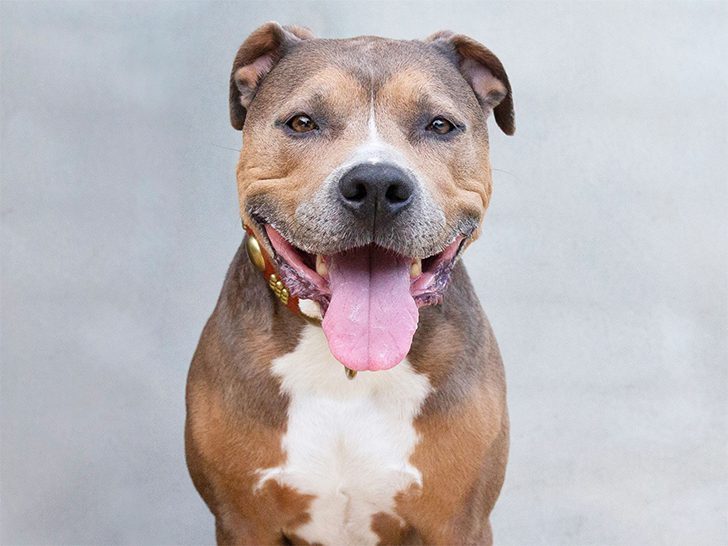
Pit bulls are large hounds with razor-sharp teeth. If appropriately socialized and taught, these creatures make great watchdogs and domestic companions. They can be incredibly compassionate and caring. In the 1800s, they were developed for the competitive sport of luring bulls and bears in England.
When blood sports were outlawed in 1935, they were substituted with the similarly vicious combat sport of dog fighting. Because of inbreeding, pit bulls are violent. It's one of the most aggressive canine breeds that never gives up in a dog fight. Pit bulls are strong dogs that ought to be kept on a leash. They do not fare well in off-leash dog parks.
Wolfdog
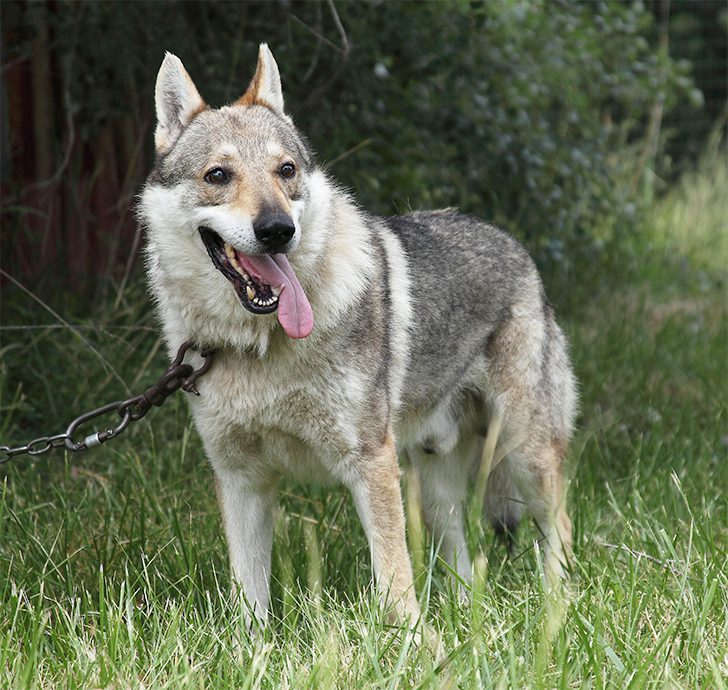
Wolfdogs are a crossbreed between a domestic dog and a feral wolf, but it's unclear what percentage of each they have. The dog's pups are sold for $2.5K by breeders, even though most puppies have no wolf component. If by six months your puppy has clawed an exit path through your house's walls, you have a real wolfdog to deal with.
A wolfdog does not make an excellent security hound since it likes to hide from outsiders. They despise being kept indoors, don't have the people-pleasing traits that most dogs have, and should not be left alone with tiny pets or kids owing to an intrinsic predatory impulse.
German Shepherd
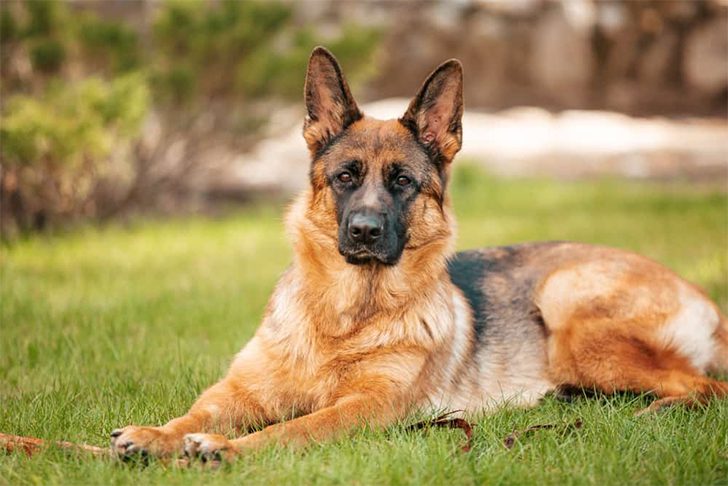
German Shepherds are most famous as the dog breed that represents K9 police security patrol. Since they need training from an early age, this species is not suited for novice hound owners. In 1899, the breed was developed in Germany from traditional herding dogs in order to, well, assist with herding sheep.
German Shepherds were brought home by returning soldiers from WWII, and 'Rin Tin Tin' became the first cinematic star dog. Although it was bred to be a herding dog, it was also bred to be versatile. It's a working dog who adores professional tasks. It has thrived in dog competitions and is an exceptional rescue, guide, and police dog.
Greyhound
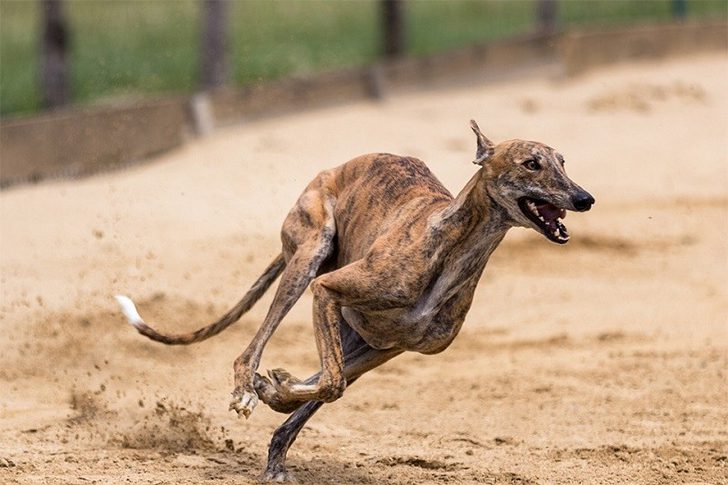
The aristocratic Greyhound is a historic purebred that is said to have evolved in Egypt or Greece. With long legs, an arched back, and a slim, aerodynamic frame, this hound was engineered for speed. They are race dogs, but they were originally developed to pursue foxes, deer, and hares by British royalty. Kids and tiny animals may look like prey to them.
Greyhounds are placid, gentle canines that don't need much training. They don't do well in cold temperatures. As a short-haired breed, it's simple to care for, although a doggie sweater might be necessary on chilly days. A high-back fence, about six feet tall, is also required.
Bullmastiff
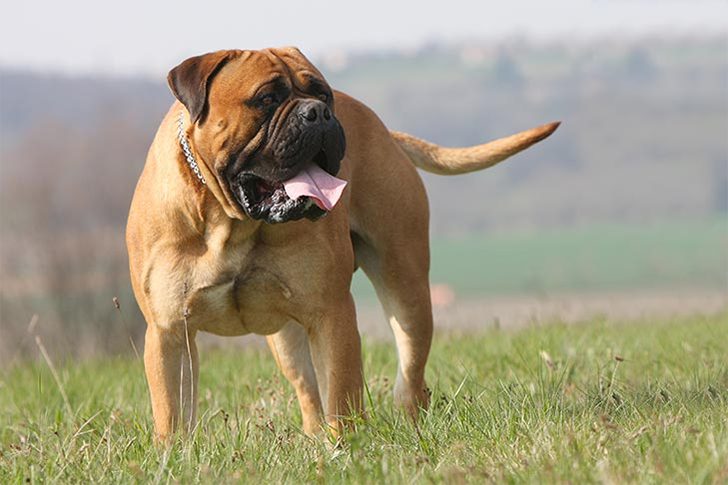
The Bullmastiff is an English breed from the 1860s whose purpose was to secure livestock on big estates from deadly poachers. It's a courageous and strong dog that may weigh over 130 pounds. This breed gets along well with kids but not so well with unfamiliar people. These animals will snore, slobber, and fall mostly into slumber when indoors, making them physically unfit.
Bullmastiffs are tough and must be trained regularly. On the other hand, the pet is dedicated to its guarding temperament but is also peaceful and friendly. When provoked, this dog becomes aggressive and must be fully trained at a young age.
Basenji

A Basenji may be an unsuitable family pet because many owners are known to tell tales of their pets' destructive behavior. With its curled tail and perky ears, it's not a surprise that this breed is cunning and active. It's observant and guarded, inquisitive and astute.
It appears to be energetic with its bouncy ears and tightly coiled tail. A Basenji never barks, but it can produce a variety of unique sounds like wailing and yodeling. This canine is a prehistoric breed of dog found in the African Congo by Pygmy hunters. These dogs make excellent watchdogs, though, since they are always alert.
St. Bernard
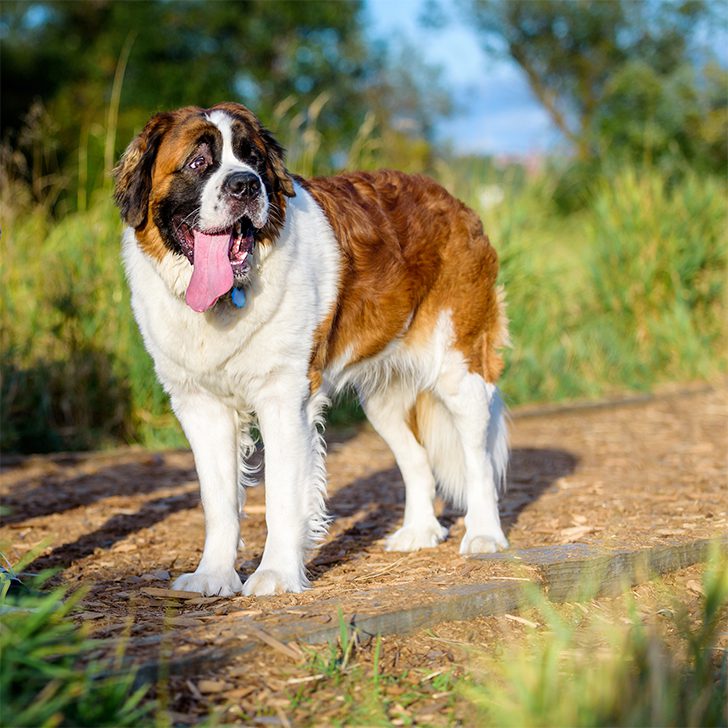
Saint Bernards gained their title while serving monks somewhere at Saint Bernard Hospice in the Swiss Alps. The dogs were utilized by the monks for saving and searching operations to find lost passengers. Thousands of lives were saved by these hounds.
A Saint Bernard does not stray far from its character as a gentle giant since it's content with children's describing obedience, being enthusiastic, friendly, and tolerant. Though the dog likes to please its owner, its size has the potential to cause a very serious situation since it's susceptible to heat stress, drools a lot, and chews things, so you need to be careful.
The Great Pyrenees
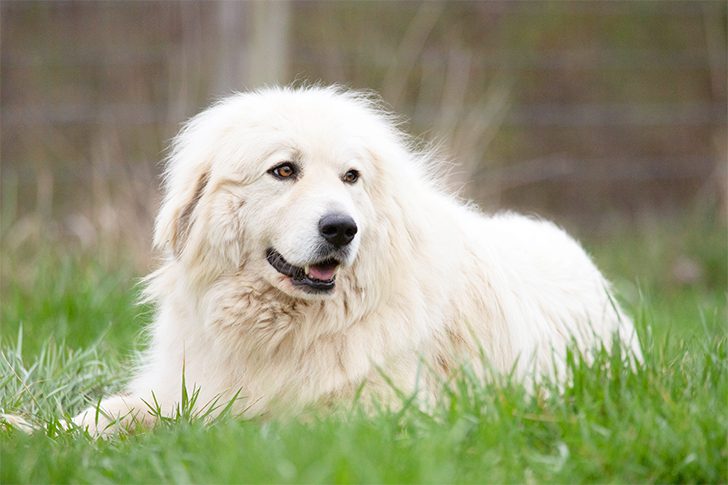
This dog breed can be a dedicated pet committed to the family and a capable watchdog. However, because the Great Pyrenees are powerful and stubborn, a rigorous training routine is required. It doesn't have a reputation for being an easy-going dog, so training it is a challenge, but with proper socialization, it can become a wonderful friend.
These canines are great for youngsters and are peaceful indoors. Outside, this pet requires safe fencing and should not be walked without a leash. Drooling is quite a prevalent downside. Other than that, this pet is a little cautious, protective, and attentive toward its family.
Dalmatian

Dalmatians were bred to be fast. They began by racing horse-drawn vehicles and eventually became well-known for running in the fire department. So, going for a ten-mile jog every morning would help a lot. It will not, however, cure its high-strung tendencies. It's one of the most vivacious dog breeds.
This distinctive white and black-spotted pet has a tall build, floppy ears, a long tail, and a territorial instinct that makes it a good watchdog. Dalmatians can be violent, destructive, and hard to train. Additionally, these dogs can dig a crater-sized hole in your garden and may be too energetic to be around young children and small pets.
Chow Chow

The Chow Chow is known for its cat-like personality as an independent and dignified pet. It's regarded as one of the world's oldest dog breeds because of its vociferous uniqueness. However, it's not a perfect fit as a pet for humans because it gets affected by mild climates, and it's hard to control.
It's also quite loud when yapping and can be quite a handful to take care of since they are a high-maintenance breed. The dog can be developed into a well-rounded Chow if there is a skilled controller in the family, but households unaware of its traits or having no trainer shouldn't pick it.
Shih Tzu
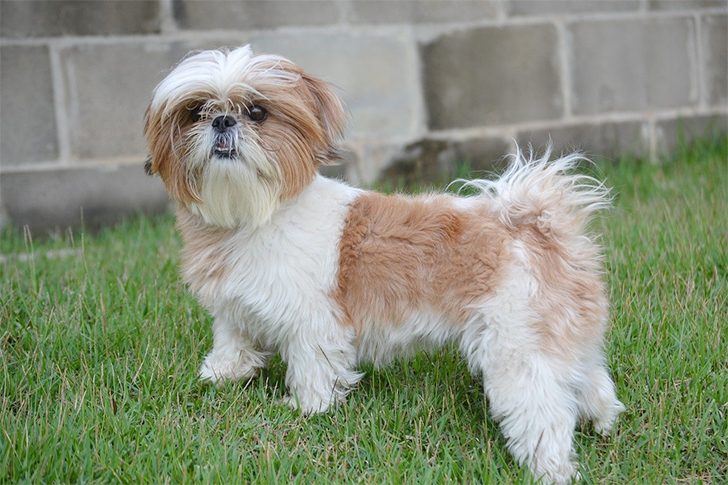
Have you ever met a perfect companion as well as a less outdoorsy pet? The Shih Tzu originated from China and displays impeccable loyalty as a lapdog. These tiny furballs are playful, mischievous, and entertaining to have around the home. One of its downsides is that they are prone to incessant barking and require constant house training.
Even though the Shih Tzu is susceptible to dental issues, as a brachycephalic, it's super notorious for its stubbornness. Nonetheless, it has adorable black eyes and bulging eyeballs that are likely to succumb to an injury known as proptosis. This type of dog has a hereditary condition recognized as renal dysplasia.
Affenpinscher
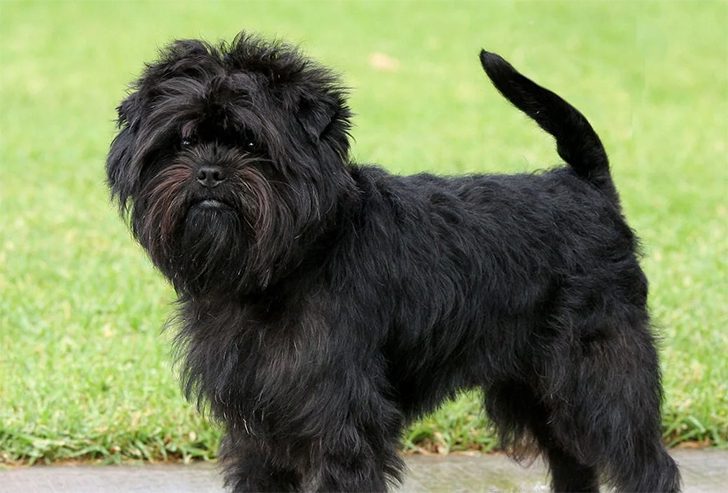
If you're looking for a one-of-a-kind dog, the Affenpinscher is a fantastic choice. It's known by the German term "monkey-like terrier," and it certainly lives up to it. This toy-sized dog has a beard, a mustache, thick eyebrows, and a rough cape-like formation at the shoulders. It enjoys monkeying around and is as malicious as it looks.
The Affenpinscher is a chatterbox and climber who's fearless and a fierce rodent hunter. This breed is an excellent watchdog, but its size restricts it from performing any protective duties. It's a brave and stubborn family dog that needs consistent training to put an end to its snarling, snapping, and biting.
Chihuahua
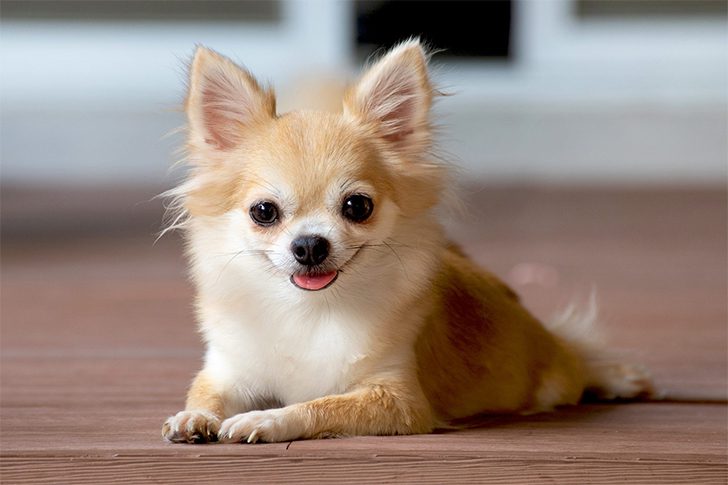
The Chihuahua dog breed was first identified in 1850 and named after the Mexican state where it was sighted. The breed is the tiniest among all dog breeds, weighing about two to six pounds and rising a few inches above the ground. Their pointy ears and bulging eyes identify them but they can be harmful.
Chihuahuas are often aggressive, ankle-biters, and nippers; they even dare to go after big dogs regardless of their small stature. They are determined, proud, and vivacious, but still affectionate and devoted friends. Chihuahuas are not excellent with kids, though, because they become snappish.
Great Dane

The Great Dane is a reasonably large breed of dog. It's regarded as one of the world's tallest and heaviest hounds. They can reach up to 175 pounds in weight. It's considered a gentle giant, but it may be unsuitable for some people since it drools a lot.
Its love for people and playful nature make it popular. The pet is renowned for being trustworthy and devoted when left as a watchdog. However, the dog requires constant learning from a young age since it can easily forget things. Its sleek tail can easily clear a coffee table when it's a full-grown dog!
Basset Hound

Basset Hounds are adorable but challenging to handle and train because of their stubbornness. Despite being devoted and lovable, this dog breed can be difficult for some owners to handle because of its independent nature. Although it's quite demanding, bringing one into your home can be a wise choice.
Due to their keen ability to sense smell, basset hounds can smell things miles away. This friendly animal gets along well with other pets in a home and is fairly intelligent. Additionally, another thing that stands out about these pets is that they are people-oriented and also get along well with young children.
Beagles
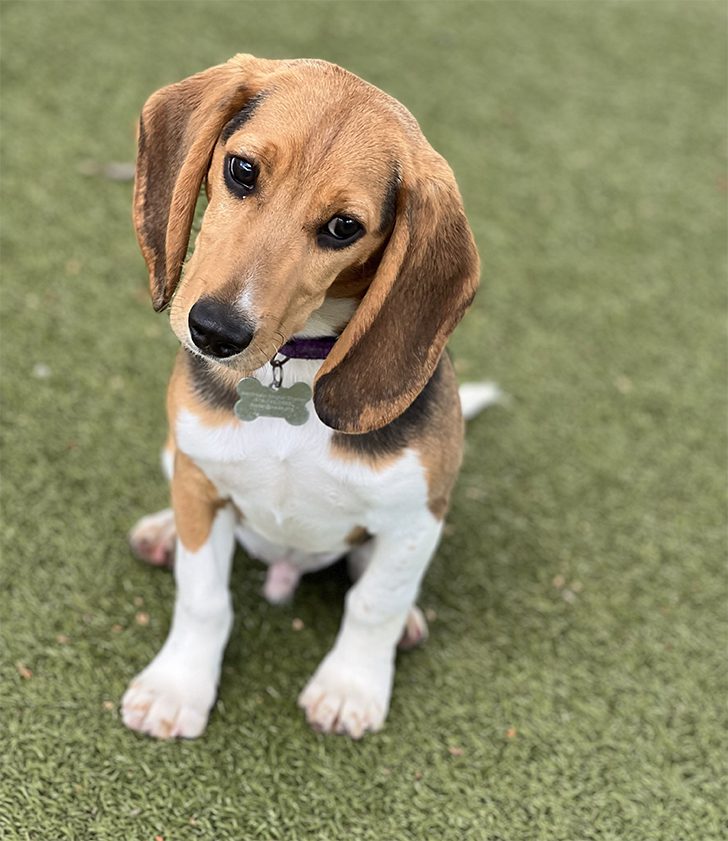
Training a dog can be challenging for some breeds that are easily distracted and playful, like the Beagle. When you compare it to many types of dogs, the intelligent pet requires a lot of stimulation. Even before receiving training from a skilled handler, they are very affectionate and obedient. Beagles are naturally amusing and mischievous.
This breed was developed in the early 16th century in England as a rabbit hunting dog. Beagles can suffer from epilepsy, disk disease, and cherry eye. The pet has large floppy ears that are prone to ear infections, so the owners should clean the ears regularly.
Bloodhounds
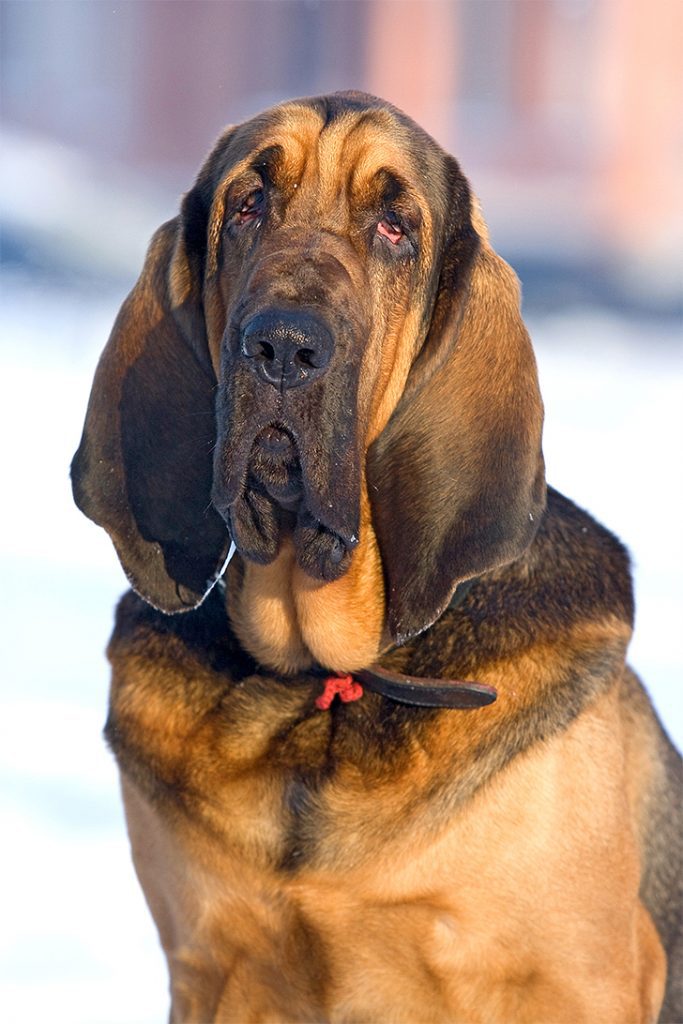
The bloodhound is a large scent dog originally bred to hunt wild boar and deer, and later, thanks to its incredible olfactory power, to track people. They have been noted several times following a scent trail more than 130 miles away.
Bloodhounds are famous for their huge bodies, droopy and long ears, and creased faces, but they're also known for their bravery, curiosity, and compassion. They can be groomed, but they're not the most popular breed in the discipline ring. Although they are extremely self-sufficient, they are less inclined to do stunts and maneuvers for themselves. They can be more submissive when it comes to treats.
Fox Terriers
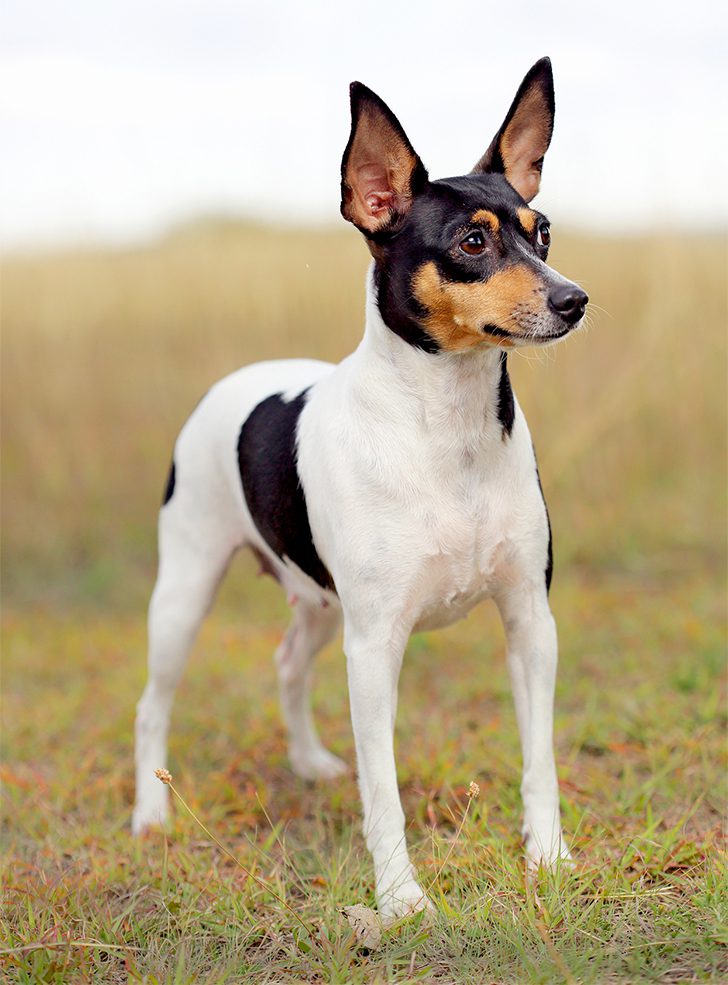
These brave fox terriers are full of energy, but they can also be moody and lazy. Usually, a dog with a fiery personality can be extremely stressful during training. This breed came from British dog breeds in the mid-1800s. On average, this born hunter weighs about 17 pounds.
The terrier can dig in and out of modest hideouts where rats, foxes, and moles live. These types of pets are a good choice for bigger families and are very warm and welcoming. The breed never gets tired of playtime, and that's one of the reasons it's best for children and the entire family.
Irish Setter

The Irish Setter is a vibrant hunting dog with a stunning red coat and elegance. They are well-known for being wonderful family pet dogs. A people-friendly companion, an uproarious partner, and a tennis ball fetcher for children. Many dog keepers consider Irish Setters one of the most stunning dog breeds.
This breed is extremely energetic, making training difficult. Relatively short coaching sessions are what's best for their high energy levels, so quick practice sessions with an insurmountable amount of patience from a trainer are just what they need. What many people don't know is that this breed stays longer in puppyhood than other dog breeds. Therefore, it retains its lovable puppy qualities.
Pug
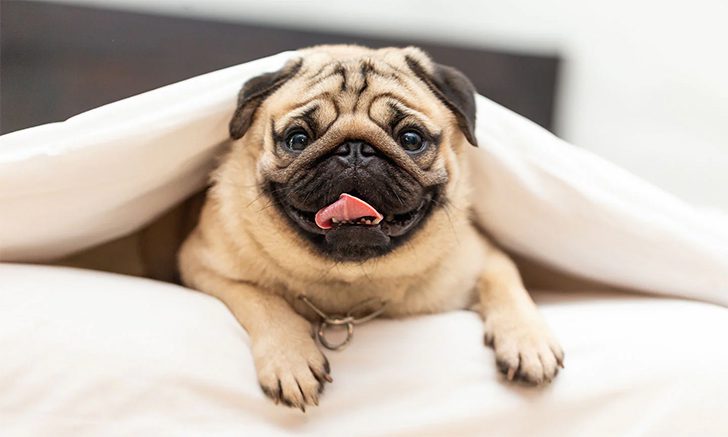
Pugs may appear odd when walking due to their small stature, but they're renowned for having lovely and charming traits. This may occasionally lead to mischievous behavior, but the calm dog always wants to impress their human family. Having said that, the puppies are a bit slow as it may take up to three months longer to house train.
They aren't among the most obedient of pets. Most of the time, pugs prefer staying indoors and dislike being outside, especially during the cold and rainy seasons. Furthermore, when they sustain an "accident" on your ground, these gorgeous little creatures rarely express any remorse.
